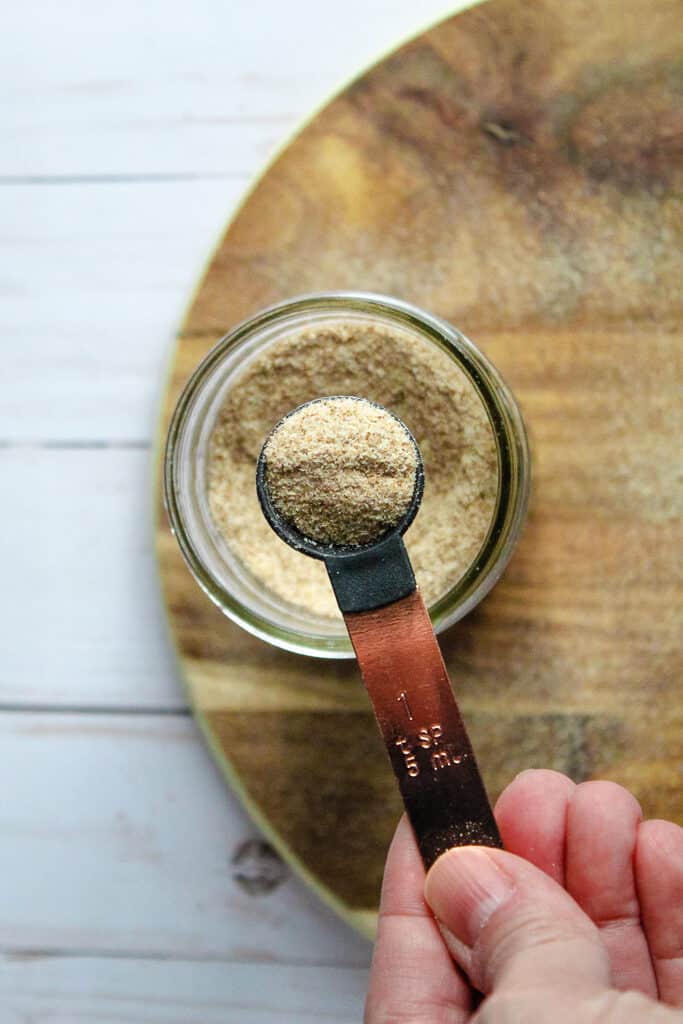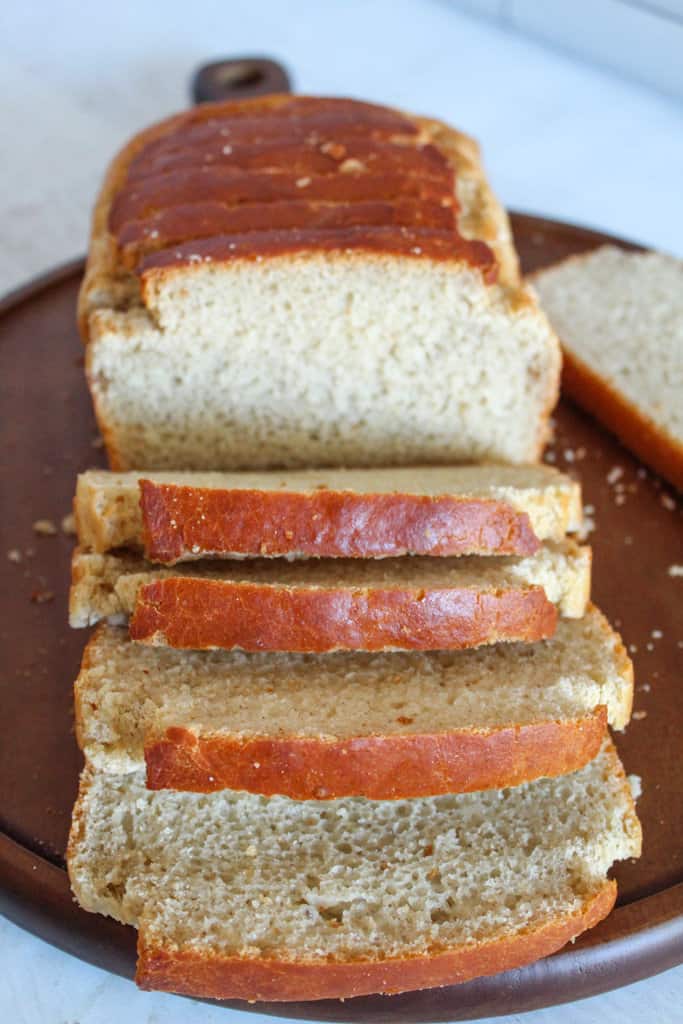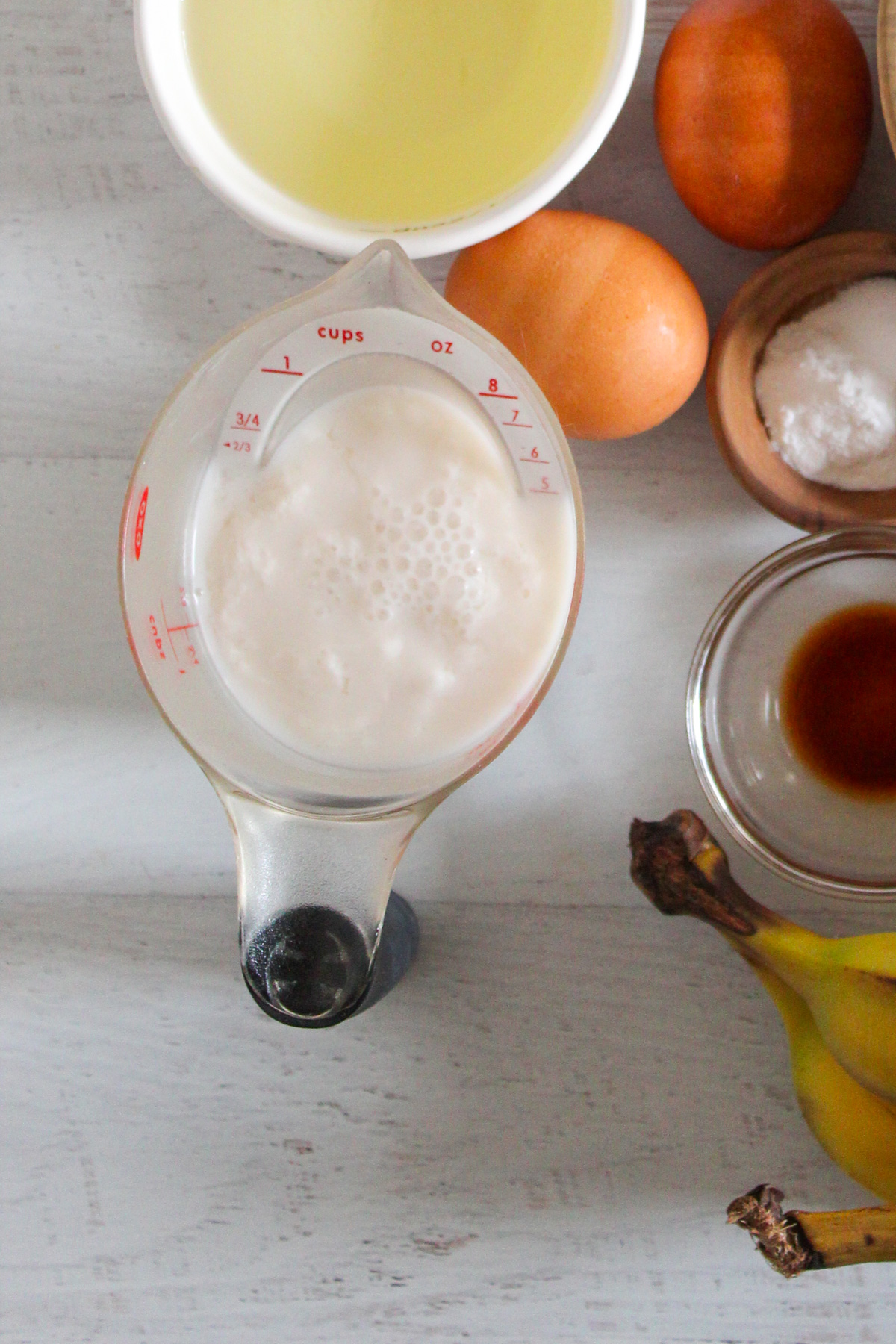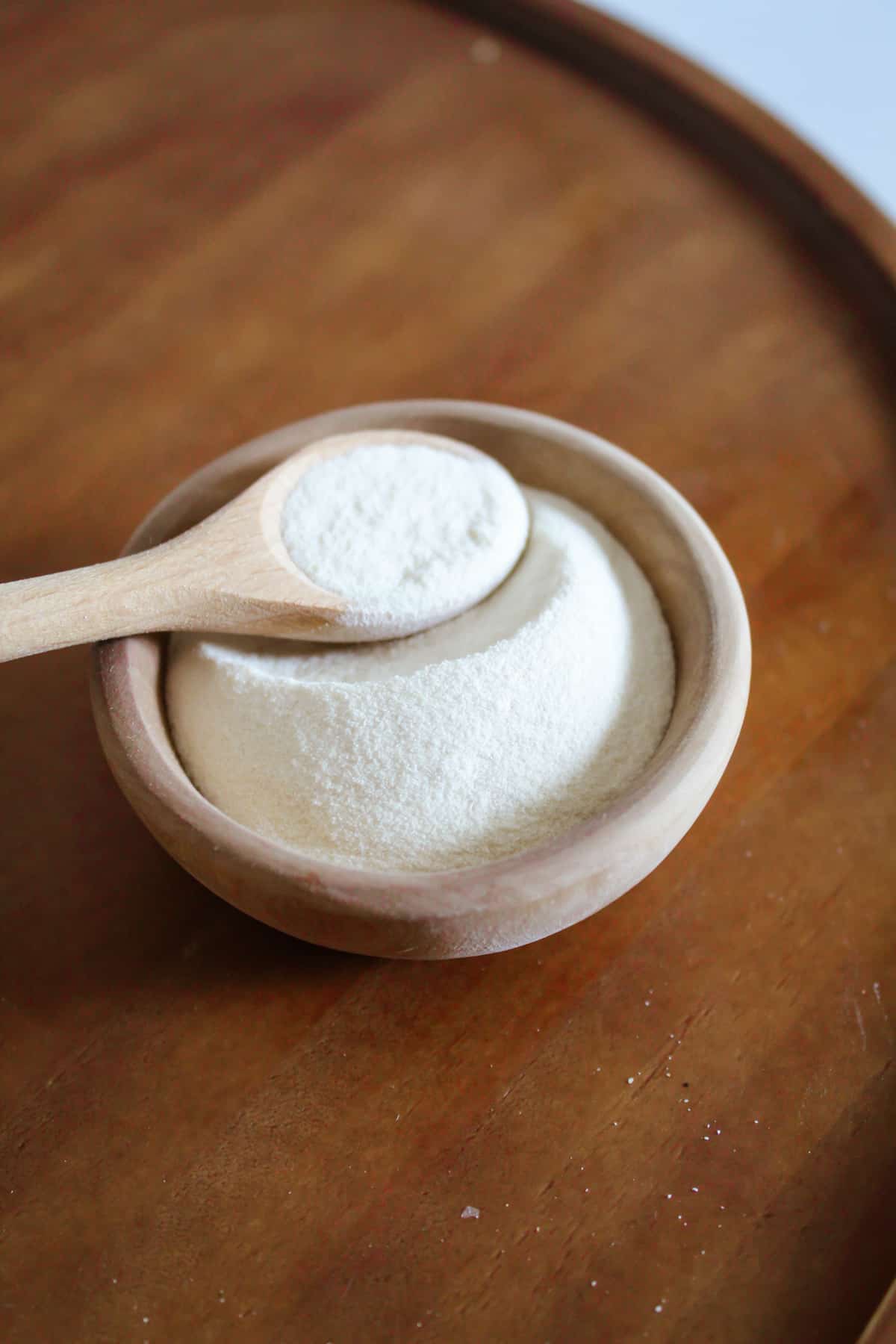How to Make a Gluten Free Bread Flour Blend Recipe
Looking for a versatile gluten free flour bread flour blend that’s as perfect for yeast bread as it is for muffins? Look no further! This flour mix is the ultimate baking flour blend that is simple and uncomplicated but works! Plus it mixes easily in a stand mixer.
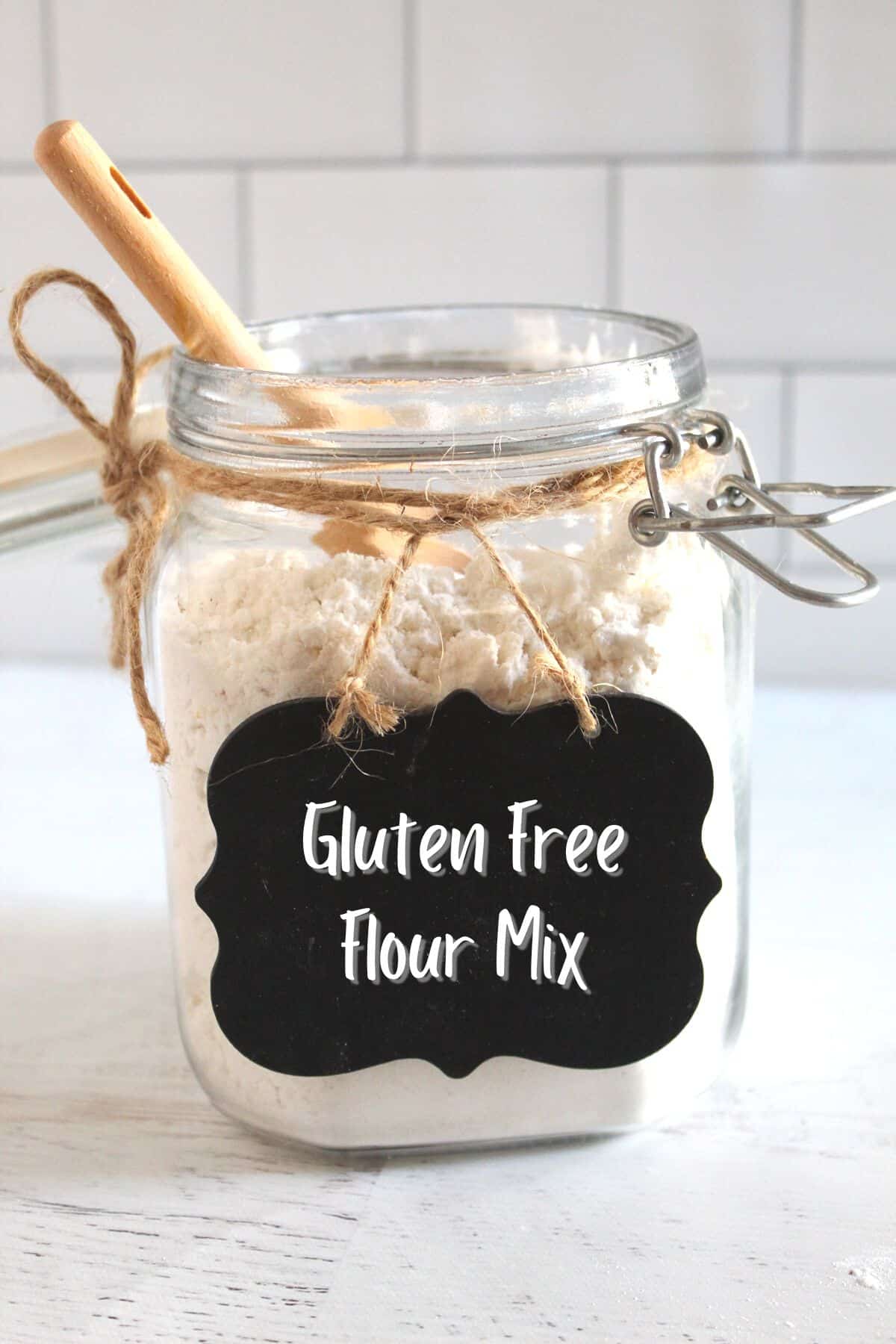
A great gluten-free flour blend can do wonders for your gluten free baking. It can transform bread recipes and take your baking to new heights. Think of it as the substitute for gluten free all purpose flour that you need for all those recipes that call for all purpose flour.
Table of Contents
But finding the right gluten free bread flour blend can be tricky. Do you go with the one on the shelf at grocery stores? It sure looks convenient. But before grabbing that bag of pricey flour mix, with half of the ingredients list looking kinda mysterious (looking at you, calcium sulfate!), try making your own at home. I hope you love and get a lot of use out of this gluten free flour for baking!
Best Results for a Gluten-Free Bread Flour
Before jumping into the different gluten free flours that go into a gluten free all purpose flour, it’s helpful to know what gluten really does in baking so substituting for it is easier. The strange thing is, freshly milled wheat flour does not contain gluten. That’s right – there is no gluten in the flour itself. What creates gluten is when two proteins, glutenin and gliadin, come into contact with a liquid.
When those two proteins are combined with water or any liquid, gluten molecules begin developing. They will multiply, resulting in dough with that “doughy” texture. The more liquid is added, the more elasticity the dough will have.
Think of gluten as the “glue” for dough.
Unfortunately, there’s not a gf bread flour that can easily replace regular all purpose flour. For people who cannot tolerate gluten or those suffering from celiac disease, one individual gluten free flour does not offer all the qualities of an all purpose flour. For example, you can’t use just almond flour or just tapioca starch. Instead, you need a combination of flours and starches. Flours provide protein and fiber, and starches provide, well, starch.
The result is this gluten free flour blend that provides just the right balance of flours and starches for gluten free baking.
I have a printable version of the different flours and starches and their weights included with my gluten free baking bundle.
Find out more about the printable here!
Ingredients in Gluten Free Flour Mix
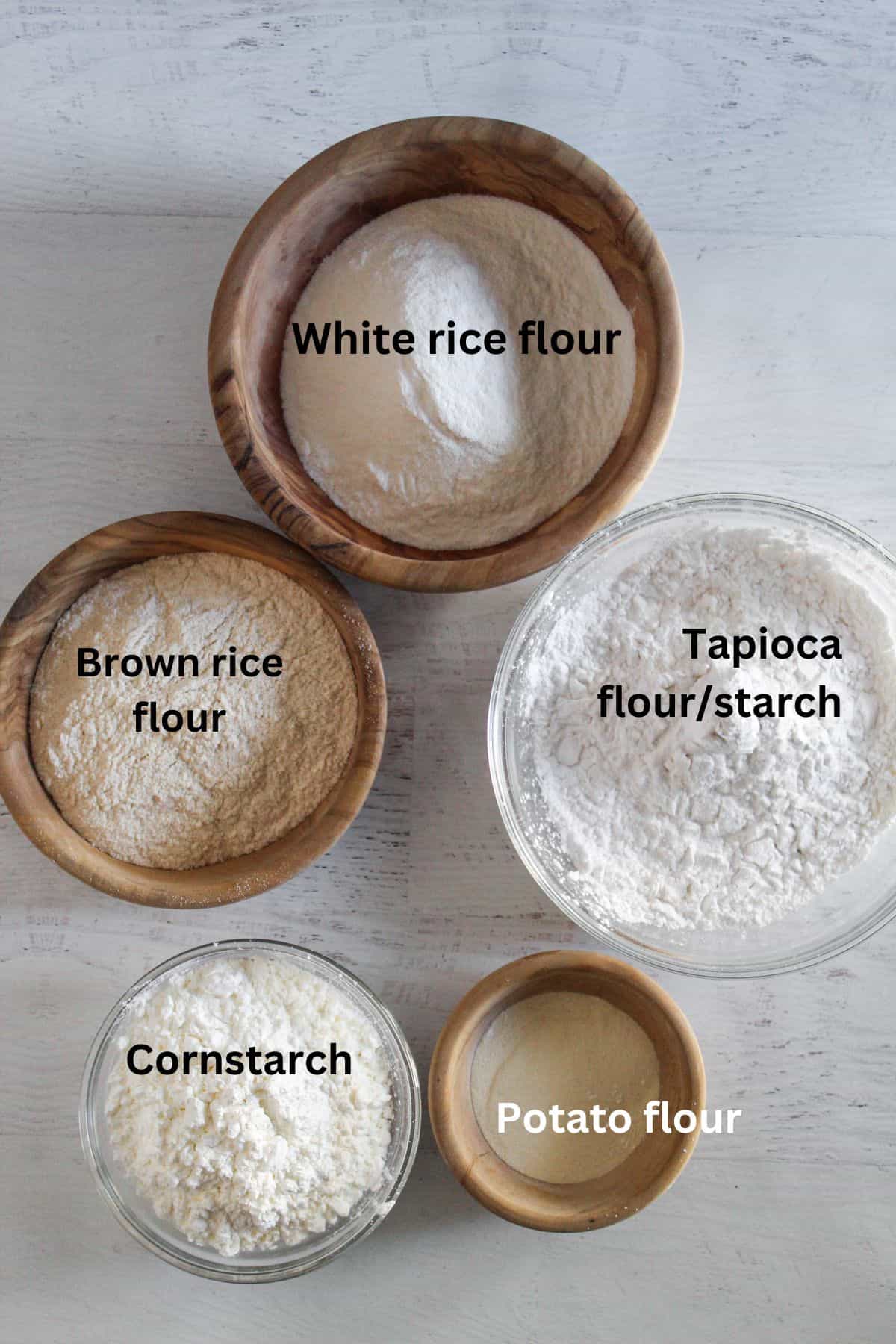
This gluten free flour mix is made of 5 dry ingredients:
White Rice Flour
White rice flour is a wonderful (and affordable) gluten free flour. It is made from medium or long-grain white rice. It has a light, fine texture and no strong flavor, which makes it a good ingredient for gluten free baking. This brand is a great option!
Brown Rice Flour
Brown rice flour is very similar to white rice flour. It’s made from whole grain brown rice and has more of a gritty texture and nutty flavor to it. It’s a great ingredient for gluten free baking, especially since it can substitute for wheat flour in many recipes.
Tapioca Flour
Tapioca flour (also known as tapioca starch) is made from the starchy pulp of the cassava root. This fine, starchy flour makes for an excellent gluten free flour due to its high starch content and binding properties. It works best in conjunction with other gluten free flours and starches, so it’s perfect for this flour mix.
Cornstarch
Cornstarch is exactly what it sounds like – the starch extracted from corn. It’s a very accessible and affordable gluten free ingredient that is good at thickening and creating a crispy texture. Just note that corn starch is gluten free and vegan, but it’s not grain free.
Potato Flour
Potato flour is a heavier gluten free flour that is made from whole potatoes. It has a strong potato flavor and works best as a binder when used in small amounts. Too much potato flour can make for a dense result, but when used correctly, it’s excellent in breads and rolls. Just a few tablespoons of it are perfect in this gluten free flour mix.
Exact measurements for each ingredient are in the recipe card below.
Step by Step to Making Gluten Free Bread Flour
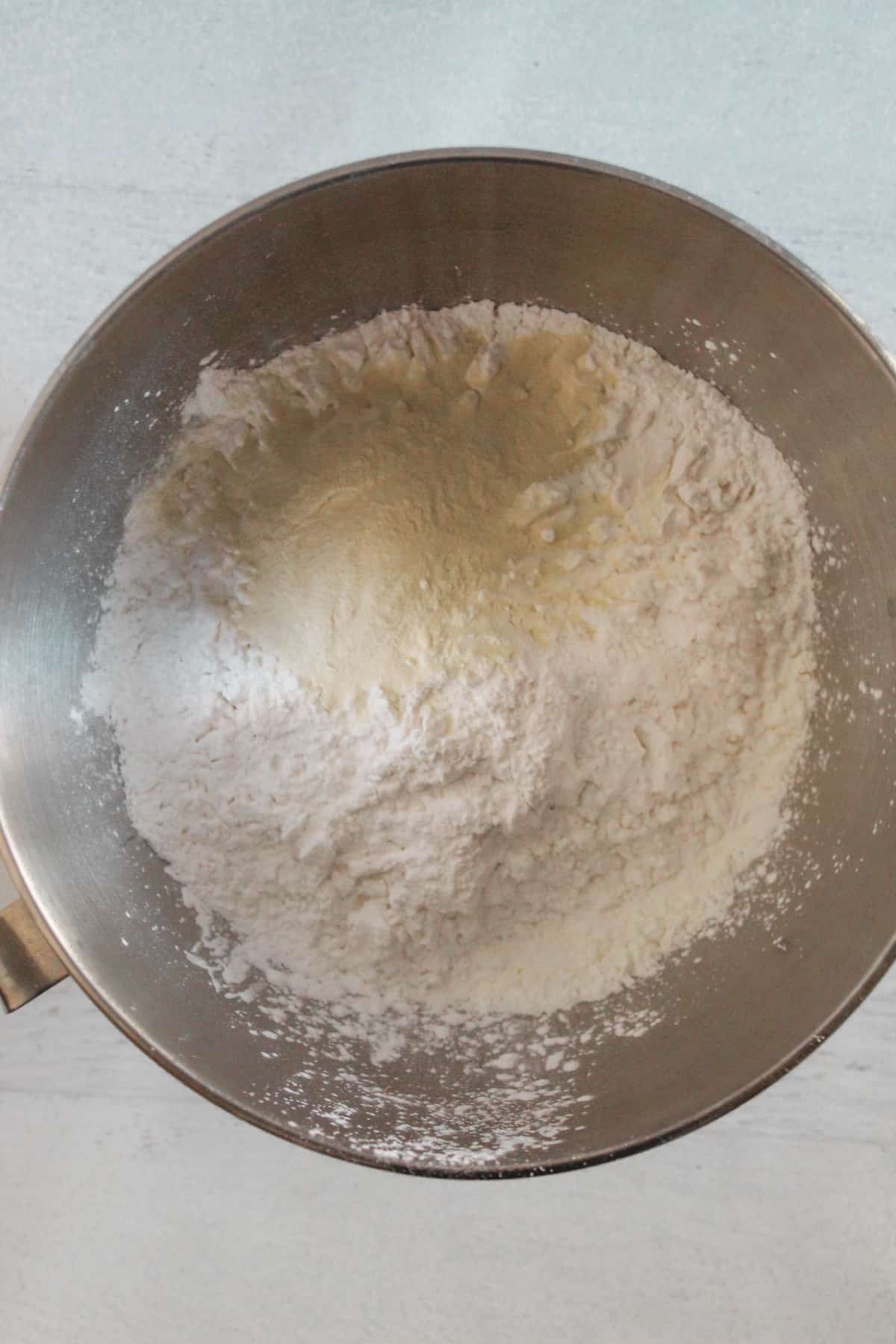
Step 1– Add the flours and starches to a large mixing bowl or the large bowl of a stand mixer.
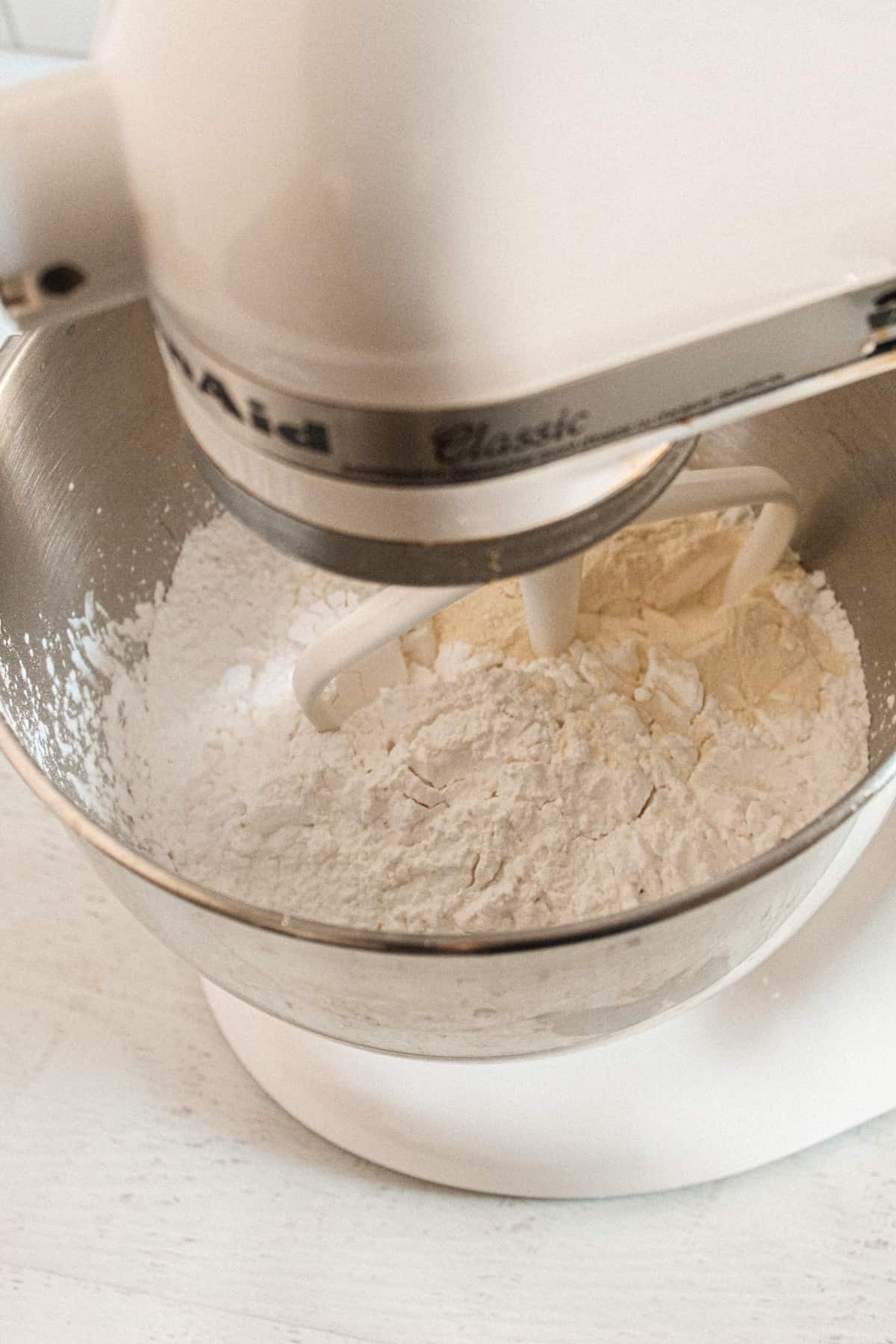
Step 2– Mix on low-medium for 5 minutes.
The easiest way to make this gluten free baking flour is to use a stand mixer to do the mixing. You’ll end up with about 9 cups of the flour mix, so a large stand mixer is a big help with getting this mega batch of flour all mixed together.
Storage
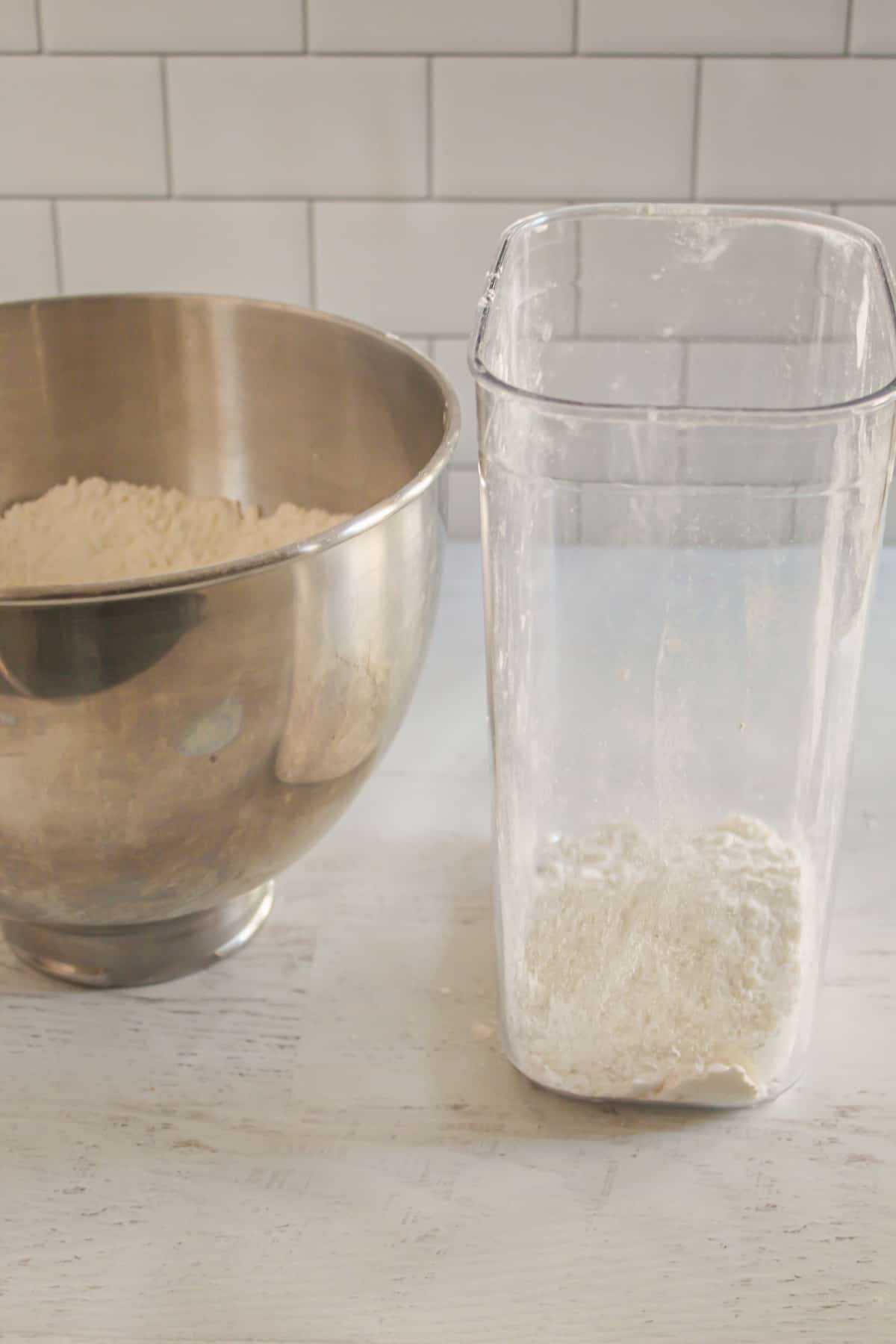
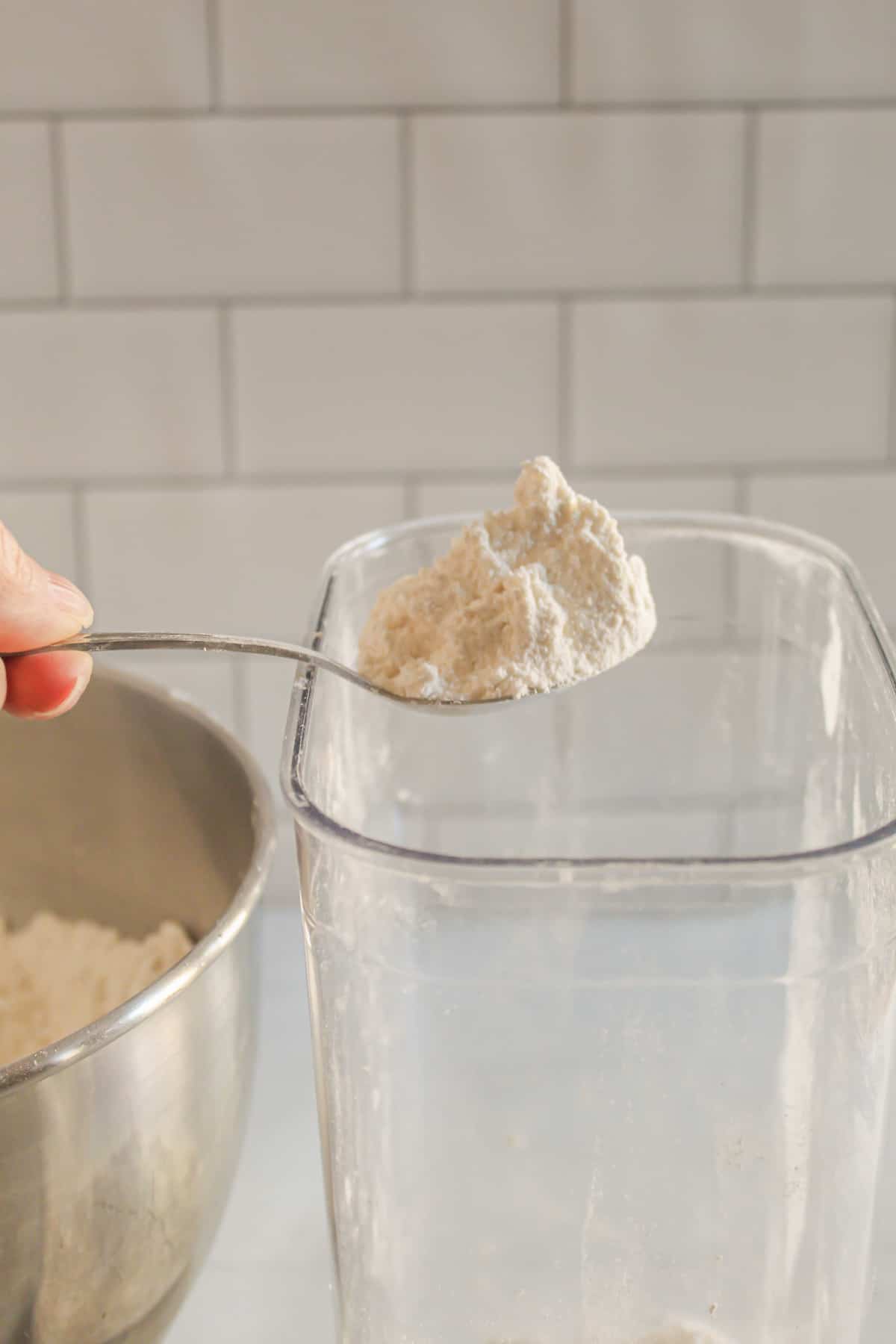
I cover gluten free flour storage in depth here. Since this blend makes 9 cups, you’ll want to use a large airtight container to store it in. I’ve used a large plastic bag in a pinch and it works fine as well. Just be sure to fold down the seal part of the bag to prevent flour from sticking in the seal.
Can this Gluten Free Flour Mix be Substituted for All-Purpose Flour?
The good news is that by creating the right balance of different gluten free flours, this gluten free flour mix can substitute for regular flour most of the time. Keep in mind that this mix does not include xanthan or guar gum, which is added to gluten-free bread dough to give it that elasticity and doughy texture. If you’d rather not add it, we have a guide for alternatives to xanthan gum that work really well.
These tips also come in handy for working with gluten free flours:
- Different flours work for different uses. Check out the long list of gluten free flours below, but substituting different gluten free flours requires matching up the protein and fiber content of the flours. Buckwheat flour is not an equal substitute for white rice flour.
- Adding some protein when you’re using gluten free flours is a good idea. Gluten is a protein, so with gluten-free baking, you aren’t getting that extra protein. Substituting in some egg white for ½ cup of water will give you a much needed protein boost (depends on the recipe). Or try out one of the high protein flours mentioned below.
- Gluten free flours should be stored in the refrigerator. This is a big one as it prolongs the shelf life of flours and starches. The first time you encounter rancid flour will be all the convincing you need to always make space in your refrigerator for your flours. You may also freeze them, but make sure to bring them to room temperature before using them. This may take a few hours. An alternative is to store some of it at room temperature and the rest in the refrigerator.
Gluten Free Baking Tip: Check out the Ultimate Guide to Gluten Free Flours for a printable, handy substitution chart!
Why Doesn’t this Blend Contain Xanthan Gum?
This gluten free flour blend doesn’t have any xanthan gum in it for a couple reasons, not everyone can tolerate xanthan gum and often, something like psyllium husk powder or chia seeds would be a better choice.
And also, not all gluten free recipes call for xanthan gum. Plus different recipes require different amounts, so I recommend adding your own xanthan gum as needed. With some recipes, like many quick breads, you’ll just need the original recipe for the flour blend, and with others, you may need to add xanthan gum.
If you’re looking for a gluten free white bread recipe, check out this gluten free bread without xanthan gum.
Can this Blend be Used as a 1 for 1 Substitute in Bread Recipes?
This gluten free flour mix can be substituted at a 1:1 ratio in some recipes, but not always. It really depends on the specific recipe you are following. I do recommend a 1:1 sub in my gluten-free sandwich bread recipe and in these banana muffins.
List of Gluten Free Flours
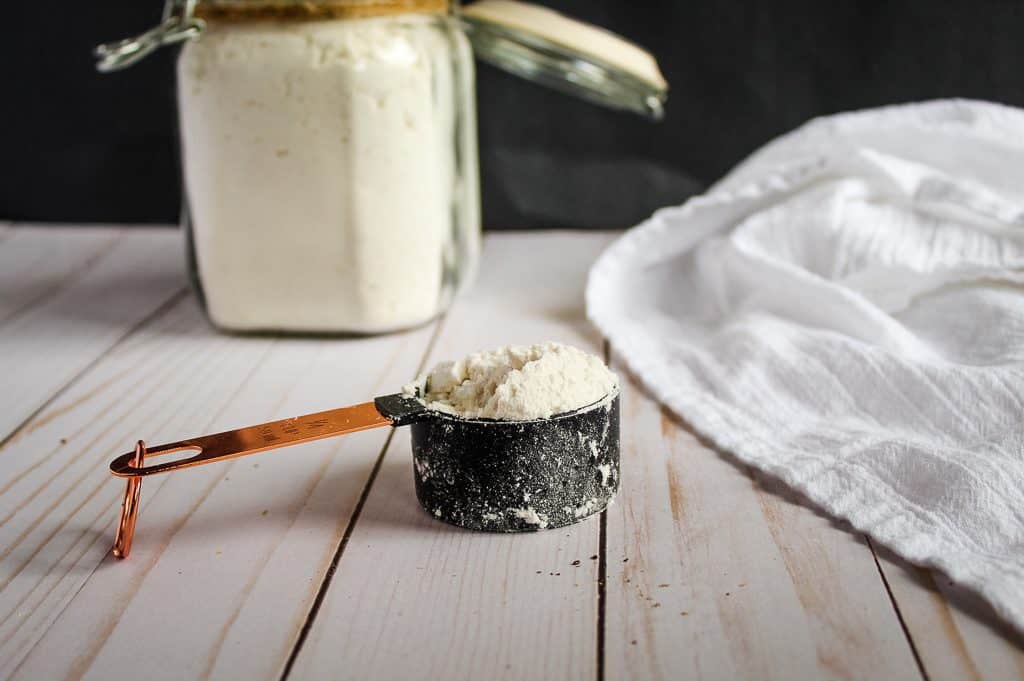
The following flours are gluten free and can safely be used in gluten free recipes:
- Sorghum flour – gluten free baking staple; adds protein with a mild taste – perfect in this gluten free Outback Steakhouse bread and this sorghum bread.
- White rice flour/brown rice flour – either one is great in a gluten free baking mix recipe.
- Sweet rice flour – great for breads, like this gluten free Irish soda bread.
- Tapioca starch/flour – a thickener; also works well in combination with other flours.
- Potato starch – a thickener for gravy; adds moisture to baked goods.
- Arrowroot starch – one of the most neutral gluten free thickeners for gravy
- Teff flour – great for desserts and teff pancakes, has a slightly sweet flavor.
- Buckwheat flour – great for waffles and these buckwheat pancakes.
- Quinoa flour – a great source of protein in your baked goods; nice nutty taste – these quinoa muffins are a great way to use quinoa.
- Certified oat flour – make sure it is certified gluten-free; good in breads – like this oatmeal bread.
- Coconut flour – great for desserts; coconut pairs well with anything sweet like this omega-3 loaded gluten free cinnamon bread.
- Almond meal – great for desserts, makes delicious crusts for pies.
- Hazelnut meal – great for special desserts.
Beware of the following flours that do contain gluten:
- All-purpose flour
- Bulgar flour
- Brown flour
- Bread flour
- Cake flour
- Durham flour
- Granary flour
- Graham flour
- Kamut flour
- Plain flour
- Sauce flour
- Self-rising flour (packaged)
- Semolina flour
- Spelt flour
- Triticale flour
- Wheaten flour
- Wholemeal flour
Please note that these lists are by no means complete.
Gluten Free Bread Flour FAQs
What is gluten free flour blend made of?
Can you just replace flour with gluten free flour?
Do I need to add xanthan gum to gluten free flour?
Recipes with Gluten Free Flour Mix
Did you make and love this recipe? Give it your review and ![]() rating below! And make sure to follow me on Instagram, Pinterest and Facebook too!
rating below! And make sure to follow me on Instagram, Pinterest and Facebook too!

How to Make a Gluten Free Bread Flour Blend Recipe
Ingredients
Method
- Add all flours and starches to a large mixing bowl or bowl of a stand mixer.
- Mix on low speed for 5 minutes, until fully combined.
- Store flour mix in a large plastic bag or an airtight container.
- For longer storage, store in the refrigerator.
Video
Notes
- Measure the flours and starches by weight, not a measuring cup.
- Use a large mixing bowl to ensure all the flour mixes.
- Store flour in a sealed container.
- For longer storage, refrigerate. Bring flour mix to room temperature before using.
